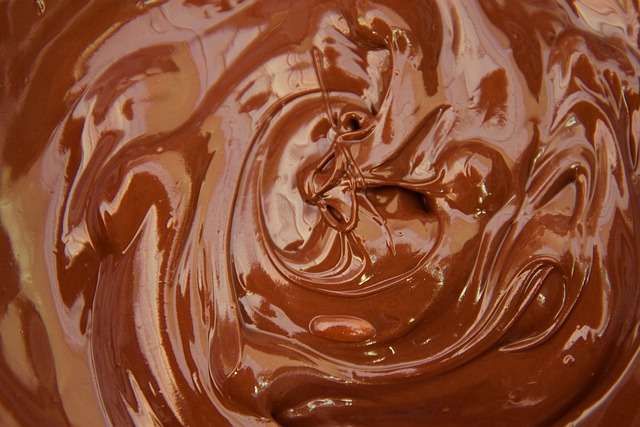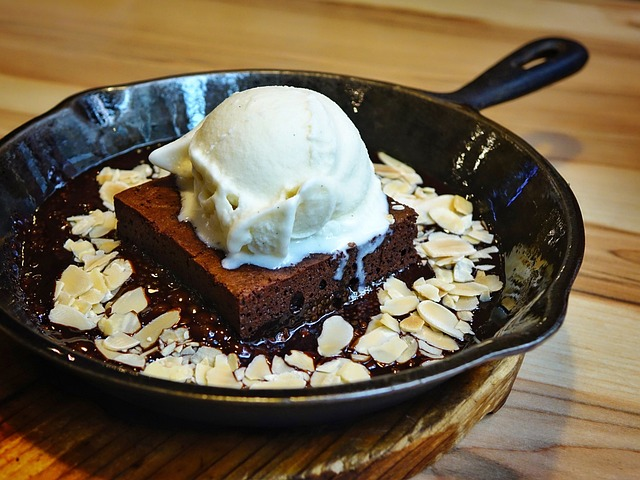Tempering chocolate is a process that involves heating and cooling melted chocolate in a controlled manner to create a stable, smooth, and shiny texture. This is achieved by carefully manipulating the cocoa butter, a natural fat present in chocolate, to form the perfect crystalline structure. When done correctly, tempered chocolate has a beautiful sheen, a satisfying snap, and a pleasant mouthfeel.
In this guide, we will explore the ins and outs of tempering chocolate, including the science behind it, the different methods used, and tips to achieve perfectly tempered chocolate every time.

The Science of Tempering Chocolate
When chocolate is melted, the cocoa butter’s crystalline structure breaks down, resulting in a liquid consistency. If allowed to cool and solidify without any intervention, the cocoa butter would form a random arrangement of crystals, resulting in a chocolate that is dull, grainy, and prone to fat bloom (a whitish, streaky appearance on the chocolate’s surface).
Tempering chocolate involves the controlled formation of stable cocoa butter crystals, specifically the beta-crystals. When the chocolate cools down and solidifies, these beta-crystals create a well-organized structure, resulting in well-tempered chocolate with the desired sheen, snap, and smooth texture.
Choosing the Right Chocolate for Tempering

The type of chocolate you use for tempering matters. High-quality chocolate, such as couverture chocolate, contains a higher percentage of cocoa butter, making it ideal for tempering. It is also important to avoid chocolate with added vegetable fats or other additives, as these can interfere with the tempering process.
Dark chocolate, milk chocolate, and white chocolate can all be tempered, but they require slightly different temperature ranges during the tempering process. Semisweet chocolate, a type of dark chocolate, can also be tempered.
Discover the importance of sustainability in the chocolate industry with our insights into Ethical Chocolate Production: Sweetness with a Conscience.
Chocolate bars are the best option for tempering, as they provide a consistent quality and cocoa butter content. Chocolate chips can be used, but they are designed to hold their shape during baking and may not temper as well.
The Double Boiler Method
The double boiler method is a classic and reliable way to temper chocolate. It involves melting the chocolate in a heatproof bowl placed over a saucepan of simmering water, ensuring that the bowl does not touch the water. This gentle and indirect heat prevents the chocolate from overheating and seizing.
Discover creative ideas for unforgettable events with our tips on choosing the best Chocolate Party Favors for your guests.
To begin, chop the chocolate into small, uniform pieces for even melting. Reserve about 25% of the chopped chocolate as “seed chocolate” to help initiate the crystallization process later. Heat the remaining 75% of the chocolate in the double boiler, stirring occasionally until it is completely melted. Use a candy thermometer to monitor the temperature of the chocolate, ensuring that it reaches the appropriate temperature for the type of chocolate you are using:
– Dark chocolate: 115-120°F (46-49°C)
– Milk chocolate: 110-115°F (43-46°C)
– White chocolate: 105-110°F (40-43°C)
Once the chocolate has reached its target temperature, remove the bowl from the double boiler and gently stir in the seed chocolate. This will help to cool the chocolate and introduce the desired beta-crystals. Continue to stir the chocolate until it has cooled to the following temperatures:
– Dark chocolate: 88-90°F (31-32°C)
– Milk chocolate: 86-88°F (30-31°C)
– White chocolate: 84-86°F (29-30°C)
During this cooling process, it is essential to keep the chocolate in motion to ensure even cooling and proper crystal formation. Once the chocolate has reached its target temperature, it is ready to be used for dipping, molding, or drizzling.
The Microwave Method
For those looking for a quicker method, tempering chocolate in the microwave is a viable option. Begin by chopping the chocolate into small, uniform pieces and placing it in a microwave-safe bowl. Reserve about 25% of the chopped chocolate as seed chocolate for later.
Microwave the remaining 75% of the chocolate at 50% power in 30-second intervals, stirring after each interval until the chocolate is almost completely melted. Be careful not to overheat the chocolate, as even a few seconds too long can cause it to seize.
Once the chocolate is mostly melted, remove the bowl from the microwave and stir in the seed chocolate. Continue to stir until the chocolate cools to its target temperature (as mentioned in the double boiler method section).
Enhance your culinary experience with our guide to finding Perfect Chocolate and Wine Combinations that will delight your palate
Tips for Perfectly Tempered Chocolate
- Always use good quality chocolate with a high cocoa butter content.
- Avoid introducing any moisture to the chocolate during the tempering process, as even a drop of water can cause the chocolate to seize.
- Use a candy thermometer to accurately monitor the temperature of the chocolate.
- Keep the chocolate at its ideal working temperature by placing the bowl over a warm water bath or heating pad. Be careful not to let the temperature rise too high, as this will cause the chocolate to lose its temper.
- Test the temper of your chocolate by dipping a small piece of parchment paper or a metal spatula into it and allowing it to set at cool room temperature. If the chocolate sets quickly, appear shiny, and has a satisfying snap, it is well-tempered.
- If your chocolate loses its temper or becomes over-tempered (too many beta-crystals), you can re-temper it by repeating the melting and cooling process.
- To maintain the temper of your chocolate while working with it, periodically stir it and check the temperature to ensure it stays within the ideal working range.
- If your chocolate seizes (becomes thick and grainy), you can try to fix it by adding just a few drops of vegetable oil or clarified butter and gently stirring until smooth. However, this may affect the final texture and setting properties of the chocolate, making it less ideal for certain applications.
- Practice makes perfect. Tempering chocolate can be tricky, but with patience and practice, you will develop the skills needed to create perfectly tempered chocolate every time.
Uses for Tempered Chocolate
Once you have mastered the art of tempering chocolate, the possibilities are endless. Tempered chocolate can be used to create a wide variety of confections, from molded chocolate candies and truffles to chocolate-covered fruits and nuts. It can also be used to create a beautiful chocolate coating for cakes, cookies, and other baked goods.
When making chocolate bars, use tempered chocolate to ensure a smooth texture and a professional appearance. For chocolate chips, temper chocolate chips before incorporating them into recipes for a higher quality result.
Perfectly tempered chocolate can elevate your homemade chocolates and confections to a professional level, making them not only delicious but visually appealing as well. With a bit of practice and attention to detail, you’ll be able to create beautiful, shiny, and smooth chocolate creations that are sure to impress.
In conclusion, tempering chocolate is an essential skill for any serious chocolate enthusiast or aspiring chocolatier. By understanding the science behind cocoa butter crystallization and carefully controlling the temperature of the chocolate, you can create a perfectly tempered chocolate coating or product with a beautiful sheen, satisfying snap, and smooth texture. Whether you’re making homemade chocolate candies, or chocolate bars, or simply want to elevate your chocolate creations, mastering the art of tempering chocolate will take your chocolate-making skills to the next level.
Explore the soothing and therapeutic effects of indulging in Chocolate as a Form of Self-Care and Well-Being.
